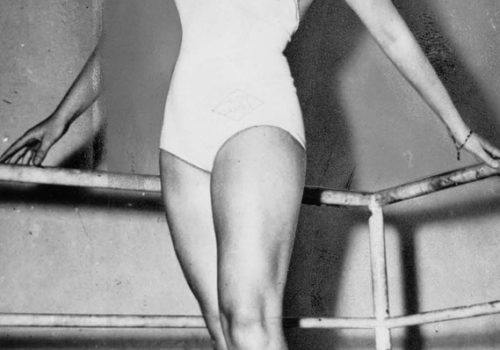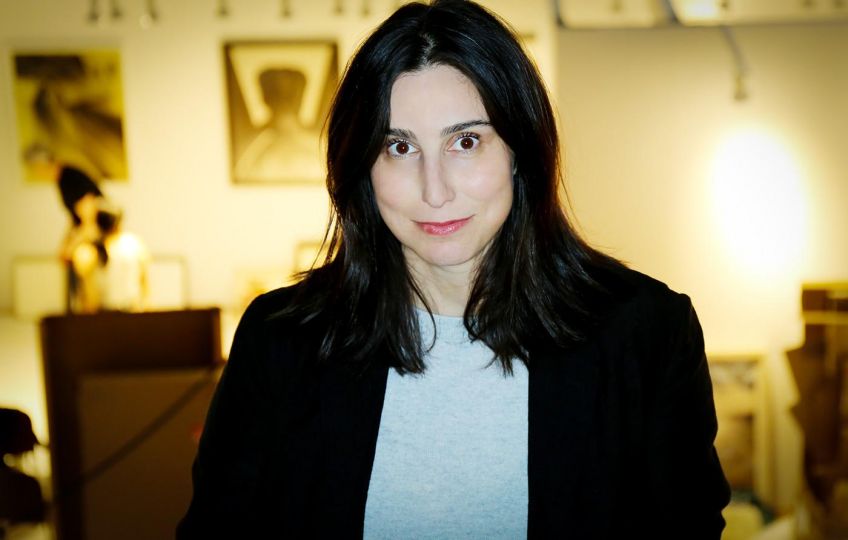As an artist who immerses himself in the essence of photography with an analytical gaze like an obsessive researcher, Sebastian Riemer moves quite playfully along the pinnacle of doubt about the truth of the medium. From there, he surveys the possibilities of a new pictorial composition which are inherent to it. What is strange about his perceptions is that, although they are clearly produced through photographic technology, they do not appear as if this was actually the case. Everything is completely transparently recognisable yet we nevertheless puzzle over them.
What is this, which we see? Where does it come from? What purpose does it serve? When, for example, he records the covering mesh of various loudspeaker boxes, everything is there where it belongs. Nevertheless, we remain on the threshold of naming them. The surface, covered evenly in an all-over process with dots – about which one cannot definitively say whether one is possibly dealing with holes there – appears like a pure plane.
So planar, that every suggestion of spatiality disappears, and so abstract, that we cannot assign it to the world of nameable things immediately. It is as if the photographer had lost his orientation in the fields of everyday meanings, in doing so reached the point of origin of seeing and, through this, gained a pure picture which stands completely for itself. Detached from the functional meanings of quotidian reality. In the specific case called “Grundig”, 2010, everything is concentrated on the centre of the loudspeaker cover.
From there, light appears to shine out as from a lighthouse. Here and there, there are traces of use. All in all, aging processes, which retrospectively leave a mark of singularity on serial products as well. Riemer is an artist who values it that eye contact with the world is mediated through a technical device such as a camera, because this creates an ineluctable distance. On his journeys to the picture he not only photographs things, he also resorts back to anonymous photographs which he finds at flea markets or in photo archives. What is important to him is to advance directly to the sources, instead of being reliant on digital intermediaries or dependent on them. There is something which speaks to him. Something is there, which challenges his gaze. Once, by chance, he discovered press photos which are manipulated through retouching; since then, he consciously searches for them. He changed the format in such a way that the people on the picture suddenly confront us viewers life-sized. Already through the fact that the proportions are different, our perception shifts. What becomes visible through this are above all the tiny retouches, which were driven so far that they were barely still visible at the end after the newspaper screening- for the purposes of adjustment to an ideal or clichéd image which is deceptive to the viewer.
As if the photographed and the retouched were held under a magnifying glass, the small interventions with the brush suddenly appear as exalted as painting. With the result, that what now appears as if painted and what is captured in the photograph can no longer be kept apart. Both elide into each other in such a way that the photograph comes across as painting and the latter comes across as photography.
By making the inconspicuous traces of the interventions visible by means of enlargement, Riemer transforms them into the centre of the picture. Indeed, he transcends the initial photograph by producing that which has been swept under the carpet like a magician, and showing it to us as an equal part of the picture. While in doing so its informational value becomes a minor matter, its aesthetic value comes to the fore. Through the enlarging reproduction in hard black and white, through which the aura of the sepia-toned is broken, the found photography furthermore loses the vexed status of an antique.
Withdrawn from the context of the newspaper, which loads everything with meaning according to its taste, under the direction of Sebastian Riemer, the photograph is robbed of the mantle of its interpretation. The losses are accompanied by gains which read here: universality, aesthetic autonomy and timelessness.
Sebastian Riemer uses photography to bring into focus images and situations in our surroundings which deserve longer visual inspection.
Trained at the Academy in Düsseldorf, the artist questions the image in photography as well as its materiality and modes of representation. The materials and motifs that he searches for and collects as source material are always processed in a traditional photographic manner. He focuses on single details or on the multiple layers which the original sources for his photographs consists of. Working on the visible surface through rigorous technical scanning, he treats his finds as pictorial ready-mades and subsequently documents the condition of the found, regardless of the original appearance intended by its former authors.
Unintended images which for the most part create themselves, waiting for a witness to view them are unveiled by Riemer’s precise observation : the design of a speaker found in a painter’s studio (Nightsafe, 2012), the ravages of time on outdoor advertisement (Button, 2012), and even the fragility of photographic paper itself (Coastscape, 2013).
Riemer’s works seem to repeat something that is already made. But at second glance, enlargement combined with the sharpness of photography offers another reality. Most of Riemer’s works are like technical photographic reproductions. Equal sharpness runs throughout the whole picture, from center to the corners.
The images are simple and straight, enlarged and hyperreal. Riemer’s photographs appear as objects in their own rights, though they show images of other objects pictorially collected and photographically altered to be recognised, before they might disappear. In this manner the motifs that the artist chooses, elude themselves from just being objects of camera interest. The surreal quality of precise reproductional photography helps with this, unveiling the materiality of images much like an archeologist reveals the past with his finds.
In the end we face photographs of wholly visual ambiguity, both through message and messenger.
EXHIBITION
Sebastian Riemer
Paris Photo 2014
From November 13 to 16, 2014
Stand A15
Grand Palais
Avenue Winston Churchill
75008 Paris
INFORMATIONS
Galerie Dix9
19, rue des Filles-du-Calvaire
75003 Paris
T +33(0)6 33 62 94 07
[email protected]
http://www.galeriedix9.com
















